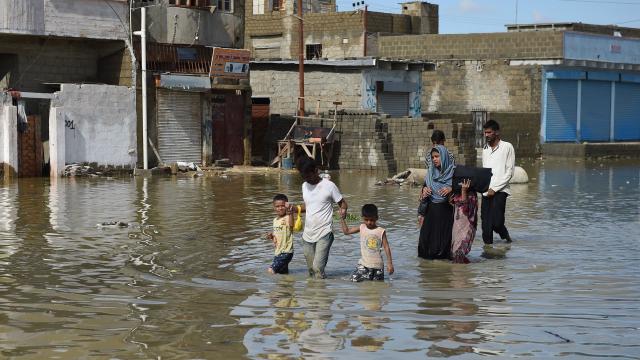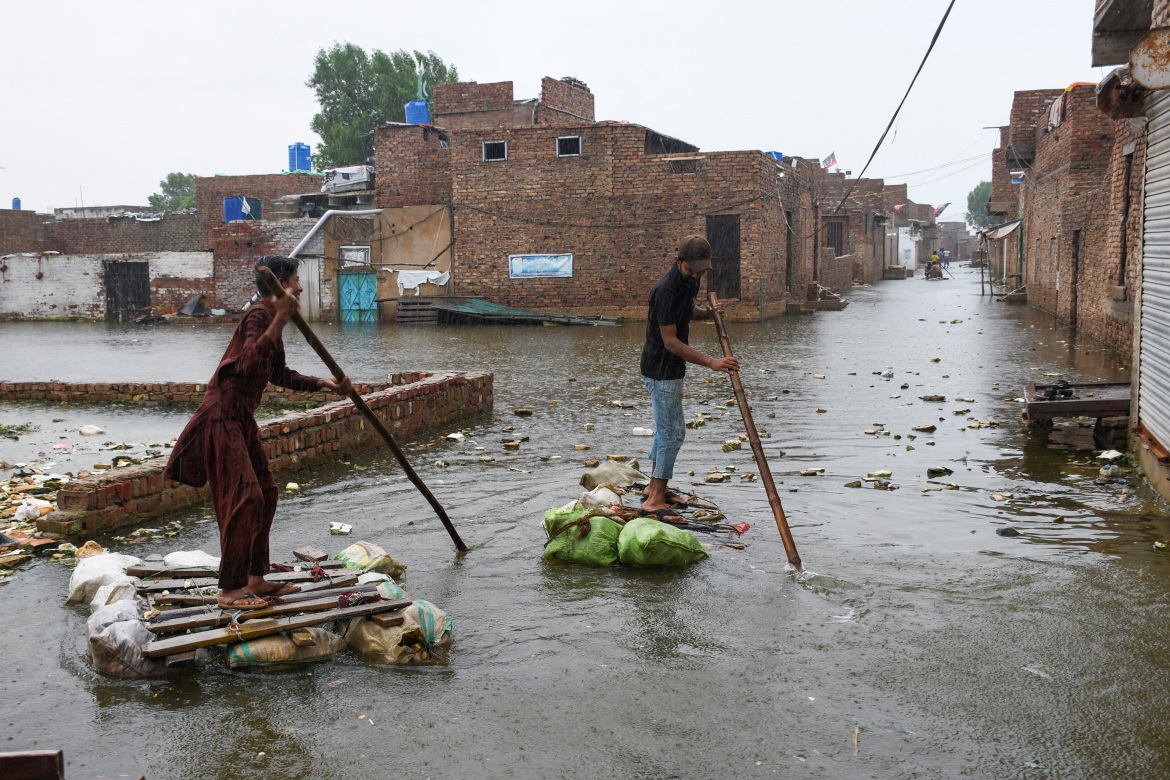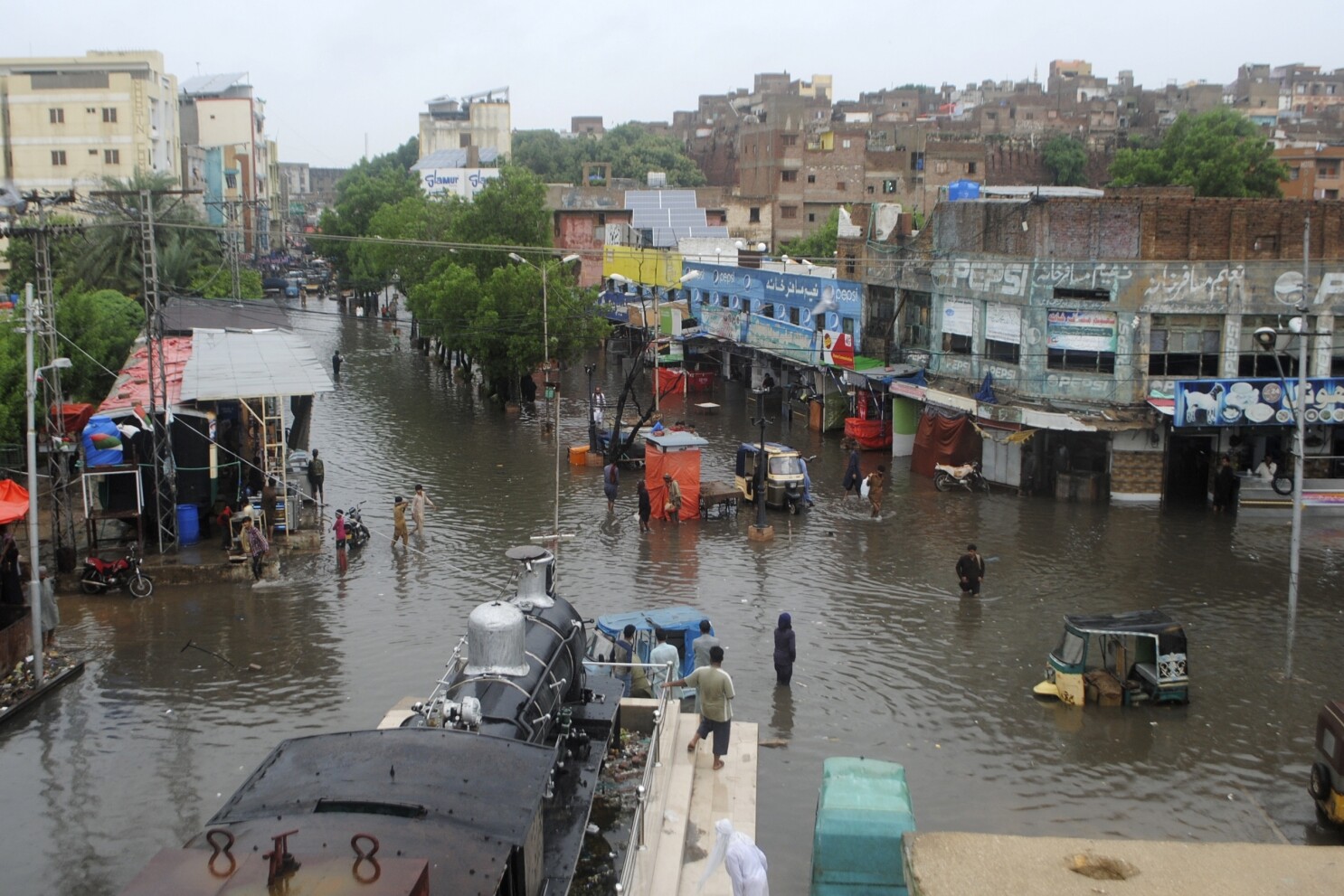
"The rain was relentless. We're in the eighth week of torrential rains and many districts look like part of the ocean. Helicopter sorties weren't finding dry land to drop rations as much of the country was under water," said Pakistan’s Minister of Climate Change, Senator Sherry Rehman, talking recently about the highest rainfall here in more than three decades.
Pakistan is living through one of the hardest climate catastrophes on record, which the minister described as a "monsoon monster of the decade." As of Aug. 30, the death toll in rain-related incidents across Pakistan had reached 1,161, and more than 1500 people were injured as the calamity was still unfolding.
The South Asian nation of about 225 million is at the frontline of extreme weather events as unrelenting heat waves, forest fires, multiple glaciers, lake outbursts, flash floods and now weeks-long rains and flooding have caused extensive devastation to the country’s infrastructure after a 2010 super flood.
Over the last few weeks, videos of inflated rivers and gushing floodwaters submerging towns, destroying buildings, washing away villages, bridges, roads and other infrastructure were everywhere on social media, forcing Pakistan to declare a national emergency and ask the world for support.
Initial estimates of losses inflicted by the floods top $10 billion, and may rise as more rains are expected this month. Some 33 million people have been affected in 110 districts, where at least 1 million houses have been damaged.
Moreover, more than 7 million livestock animals have been swept away in rural areas, as nearly 3,500 kilometers of road and 157 major bridges have been damaged. The country may face food security challenges as major crops across 3.6 million acres have been affected. The government said 50 percent of cotton crops across Pakistan have been impacted.
"We're in the middle of a perfect storm,” said Rehman, the country’s climate minister. “I'm very clear that it is a ‘climate catastrophe,' as throughout the year we've seen several extreme events. We went straight from winter into summer bypassing the spring season.
“Pakistan was the hottest place on the planet crossing 53 degrees this summer," he added, and "we have seen whole seasons of forest fires and melting glaciers in the northern parts of the country."
However, hydrologist Hasan Abbas took the view that it wasn’t just climate change but encroachment into river systems and unplanned construction that were also responsible for the vast destruction. Abbas said extreme weather events like these were also recorded in the past, thus the country couldn’t place the entire blame on climate change.
Abbas added that due to climate change, the flow of water will increase in Pakistan’s rivers in the future – unlike in Europe, where rivers are drying up – and that construction in rivers will trigger more destruction.
Over the past 50 years, Pakistan could not construct any major water reservoir or flood control canals. Furthermore, no major Pakistani city is considered climate resilient to cope with the high amount of water the country is now receiving.
A decade of bad governance, poor planning and corruption is also being blamed for the disaster. However, the government claimed that no climate resiliency plan could have accounted for the recent spell of rains that brought 700 percent more water than normal.
Melting glaciers are also a major culprit behind the current devastation, which the climate change minister feared cannot be controlled due to global warming. The world has agreed not to allow the average temperature rise by more than 1.5 degrees, but in Pakistan, temperature climbed by five degrees during March and April of this year – making them the hottest months since 1961, according to the Pakistan Meteorological Department.
Experts have warned that two-thirds of the country’s estimated 7,000 glaciers will disappear if the heating trend continues in the coming years.
The International Center for Integrated Development (ICIMOD), in a study, said that lakes appeared in at least five glaciers prematurely in April of this year, and some of them also broke off causing massive floods.
The 18-kilometer-long Barpo Glacier, located in the Nagar Valley of the Karakoram region, ruptured and caused flooding in March. Another glacier, Arando, also located in Karakoram, developed two lakes that also burst out in March. A third affected glacier was the 16-kilometer Hinarche glaciers, where three lakes were spotted in April and burst out subsequently.
A fourth affected glacier was Khurdopin, where many new lakes were spotted; a fifth, Shishper Glacier, is considered a major threat as it unleashed massive flooding in May that destroyed a bridge connecting Gilgit and Hunza, forcing the closure of the important Karakoram highway.
Experts say that now there is an urgent need for proper drainage systems and to secure the coastline from seawater intrusion. But the country will need climate change adaptation funds and policy to develop resilience against extreme climate events. The government said it was planning to institute adaptation policies and climate change resilient agriculture, but this major shift requires a lot of resources.
"We've done a lot, but it is impossible without external help. The countries who have created global warming must keep their pledges and translate their promises into actions," the Minister of Planning and Development, Ahsan Iqbal, said recently.
"Pakistan needs $10 billion for repairs and rebuilding. We're not a major emitter of greenhouses gases, but a victim of climate change triggered by 'irresponsible development' [across] the world."

















